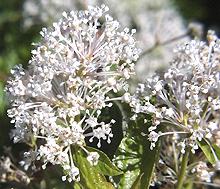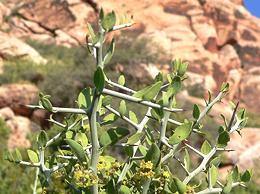

Magnolias
SAFARI
Users
Jujube
 [Red Date, Chinese Date; Annab (Persia, dried); Taejuja (Korea);
Hong zao (China, dried), Hei zao (China, dried and smoked);
Ziziphus zizyphus]
[Red Date, Chinese Date; Annab (Persia, dried); Taejuja (Korea);
Hong zao (China, dried), Hei zao (China, dried and smoked);
Ziziphus zizyphus]
Jujube fruit trees were first domesticated in India about 11,000 years ago. Their natural range is uncertain because of long cultivation but may have extended from Syria to southern China. They belong to the Buckthorn family (Rhamnaceae), a fairly large family but one yielding very few edibles.
The fruit is initially green but turns red when fully ripe and
eventually shrivels. It is very light, almost foam like, moderately
sweet. and apple-like in flavor. The photo shows fresh (top), dried
(left) and candied (right). Fresh are about 1.7 inches long, 1.6 inches
diameter and weigh just over 1 ounce.
Details and Cooking.
California Coffeeberry
 [Frangula californica, formerly Rhamnus californica]
[Frangula californica, formerly Rhamnus californica]
This moderate size shrub (usually 3 to 6 feet tall) is native to many
scrub and forest habitats in western California, extending into
coastal Oregon and Baja California. It bears juicy fruit, ripening from
green through red to black, about 3/8 inch long, containing two seeds
that resemble coffee beans. The resemblance doesn't end there, as these
seeds are considered an excellent non-caffeinated coffee substitute, said
to have overtones of Mocha. The fruit can be made into jams and jellies,
and was used by California Natives as both food and medicine.
Photo by Bri Weldon distributed under license Creative
Commons
Attribution 2.0 Generic.
Shiny-leaf Buckthorn
 [African Dogwood; Geso, Gesho (Eritria, Ethiopia);
Blinkblaar (Afrikaans); Rhamnus prinoides]
[African Dogwood; Geso, Gesho (Eritria, Ethiopia);
Blinkblaar (Afrikaans); Rhamnus prinoides]
This srub is native to eastern Africa from Eritria and Ethiopia south
into South Africa. In Eritria and Ethiopia, twigs and leaves are pounded
to produce a bitter flavoring with antibacterial properties used in
brewing local beers (Tella) and mead (Tej, Mase), similarly to how Hops
are used in brewing European beer. The berries, which ripen from green
through red to purple, are less than 1/4 inch diameter, but are edible.
The main uses for this plant in much of its growing region are magical
and medicinal.
Photo by Paul venter distributed under license Creative
Commons
Attribution-ShareAlike 3.0 Unported.
Raisin Tree
 [Hovenia dulcis]
[Hovenia dulcis]
This fast growing tree is native to Eastern China, Korea, and as far south as Thailand (rare). The edible "raisins", eaten both raw and cooked, are not actually a fruit, but a short, swollen mature flower stalk or peduncle which supports the inedible seed pod. As the pod matures, the stem attaching it to the fruit cluster swells and turns a translucent reddish brown. A pear-like flavor develops as the sugars increase, and the peduncle is ready to eat when it falls to the ground. Although small, close to the size of raisins, the crop is large.
An extract from the seeds is used as a substitute for honey and used in
candy and fruit wine. This tree is being considered as a reforestation
tree to replace eucalyptus, which is toxic to other plants. The timber
is also useful, where eucalyptus timber twists and is useful only as
firewood.
Photo by My distributed under license Creative Commons
Attribution-ShareAlike 3.0 Unported.
New Jersey Tea
 [Red Root, Indian Tea, wild snowball, mountain sweet;
Ceanothus americanus]
[Red Root, Indian Tea, wild snowball, mountain sweet;
Ceanothus americanus]
Native to most of the eastern half of North America, leaves of this plant
were used as a substitute for imported tea during the American
Revolution. Today, all parts of the plant are used as herbal medicinals.
Photo by US Fish and Wildlife Service = public domain
.


